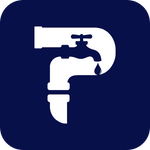In the competitive world of HVAC and plumbing services, standing out online is more critical than ever. A well-designed website is not just an online presence; it’s a powerful tool for lead generation that can significantly boost business growth. Understanding how to leverage design elements effectively can make all the difference in attracting potential customers.
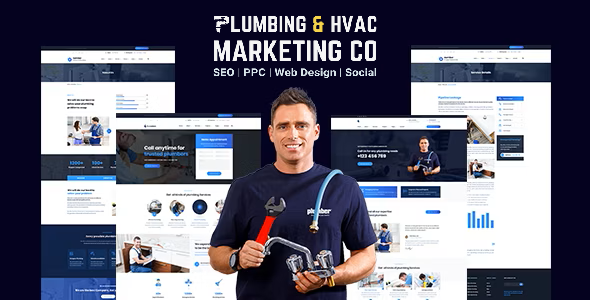
Website design encompasses numerous factors, from intuitive navigation to compelling content, all aimed at providing an exceptional user experience. By effectively defining a clear value proposition and optimizing website performance, businesses can engage visitors and transform them into loyal customers. Furthermore, integrating strong calls-to-action and harnessing the power of local SEO strategies can drive targeted traffic and increase visibility.
This article will serve as an essential guide, covering key aspects of HVAC and plumbing website design that enhance lead generation. We will explore strategies for creating user-friendly experiences, utilizing high-quality content, and analyzing competitor approaches, ensuring you’re equipped to build an effective online presence that converts visitors into leads.
Table of Contents
Understanding the Importance of Website Design for Lead Generation
Understanding the Importance of Website Design for Lead Generation
In today's digital landscape, an impeccable online presence is crucial for HVAC and plumbing businesses seeking to attract potential customers. A professionally designed website serves as a cornerstone for these service companies, significantly impacting traffic and marketing outcomes. Over 60% of clients are drawn to websites with attractive aesthetics, demonstrating how an appealing design directly influences user engagement.
HVAC and Plumbing Website Design
To leverage this insight, businesses must incorporate prominent Calls to Action (CTAs), making them easily accessible to facilitate the transition from visitor to lead. The CTAs should be strategically placed and clearly visible, guiding prospective clients smoothly toward making a connection.
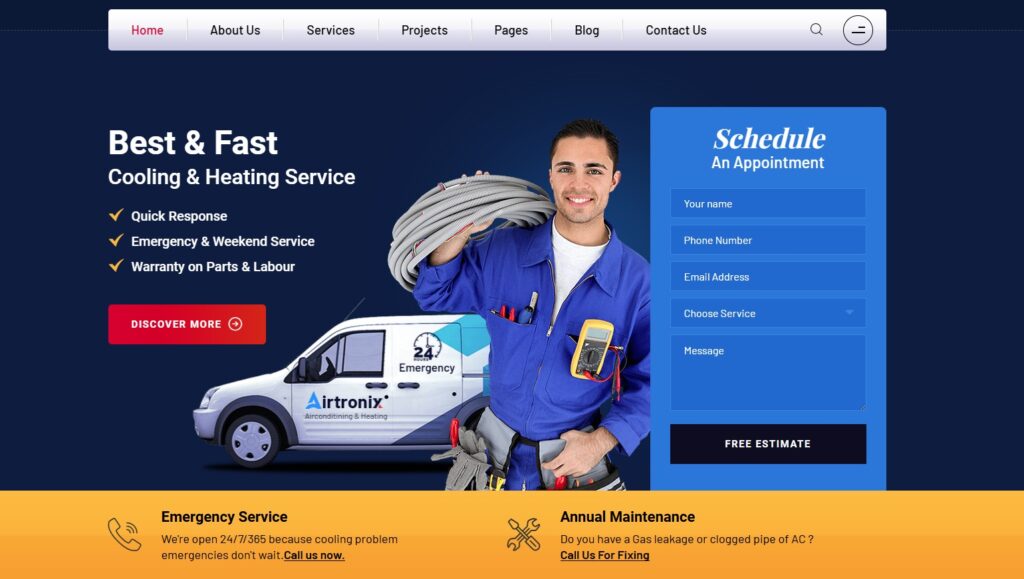
Personalization adds another layer of effectiveness. Custom photos of staff and owner create an emotional bond with site visitors, laying the groundwork for trust and credibility. This personal touch encourages potential clients to envision the people behind the services, increasing the likelihood of their engagement.
Furthermore, integrating online reviews and social proof showcases the reliability of the HVAC or plumbing company. Testimonials and positive feedback, displayed strategically on the website, serve as powerful tools for affirming the business’s reputation, thereby boosting lead generation.
In conclusion, a thoughtfully designed website not only attracts organic traffic but also enhances conversion rates, positioning a company as a trustworthy and top-of-mind choice in the plumbing and HVAC industry.
Defining Your Value Proposition
Defining your value proposition is crucial for setting your HVAC or plumbing business apart from the competition. It acts as a clear statement that explains why potential clients should choose your services over others in the industry. To establish a strong value proposition:
- Identify Your Unique Services: Outline what makes your service unique, such as offering 24/7 emergency repairs or implementing environmentally friendly HVAC solutions.
- Showcase Your Expertise: Share qualifications, years of experience, and specialized skills. Displaying these prominently reassures prospective customers of your professionalism.
- Engage with Relatable Stories: Connect with potential customers by sharing your company's history and testimonials from satisfied clients, enhancing trust and social proof.
- Simplify Appointment Scheduling: Ensure your website has clear CTAs and straightforward booking options to reduce friction for users ready to hire your services.
- Educate Your Audience: Regularly update your site with insightful blogs and educational material to affirm your authority in the field, keeping visitors returning for more.
In summary, a defined value proposition should communicate the benefits of your services, providing clear reasons for customers to choose your company. When effectively articulated, this becomes a pivotal factor in enhancing conversion rates.
Crafting a User-Friendly Experience
Creating a user-friendly experience is central to attracting and retaining potential clients on your HVAC and plumbing website. In today's digital landscape, a well-designed website is not just about aesthetics; it's about crafting an intuitive environment that navigates visitors smoothly from their initial search to contacting you for service. To do so, it must be mobile-friendly, as a significant proportion of online searches for plumbing services come from mobile devices. Users should have a positive first impression the moment they land on your website, which will encourage them to engage further with your content.
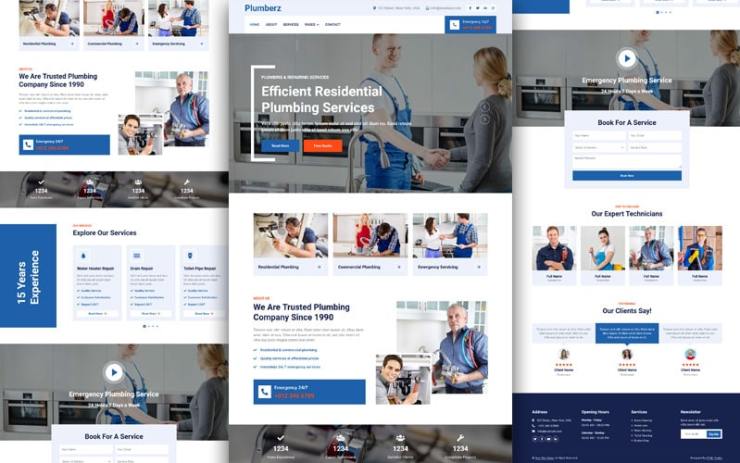
To bolster conversion rates and lead to increased visits and service bookings, design elements such as easy navigation and prominent call-to-action (CTA) buttons are essential. These elements should be large enough to click on easily, particularly on smaller screens, and they should be strategically placed to guide visitors through your site.
Quality assurance is an important part of the design process. Before your plumbing website goes live, your design team should rigorously test every aspect of the site to ensure a flawless user experience. Any glitches or confusing navigation can turn potential customers away, so this step cannot be overlooked.
Remember that the content on your website must match the excellence of your design. High-quality content paired with modern design elements, including your brand's logo and user-friendly features, is crucial for attracting, engaging, and converting visitors. This could include informative blog posts, helpful how-to guides, and clear service descriptions—all tailored to support your online marketing efforts and search engine optimization (SEO) strategy.
Intuitive Navigation
Intuitive navigation is key to creating an effortless browsing experience for visitors to your plumbing and HVAC website. Users should be able to find what they need quickly and seamlessly, with a well-structured menu and logical pathways. To enable this, your website design should feature simplified menus that are easy to understand and navigate.
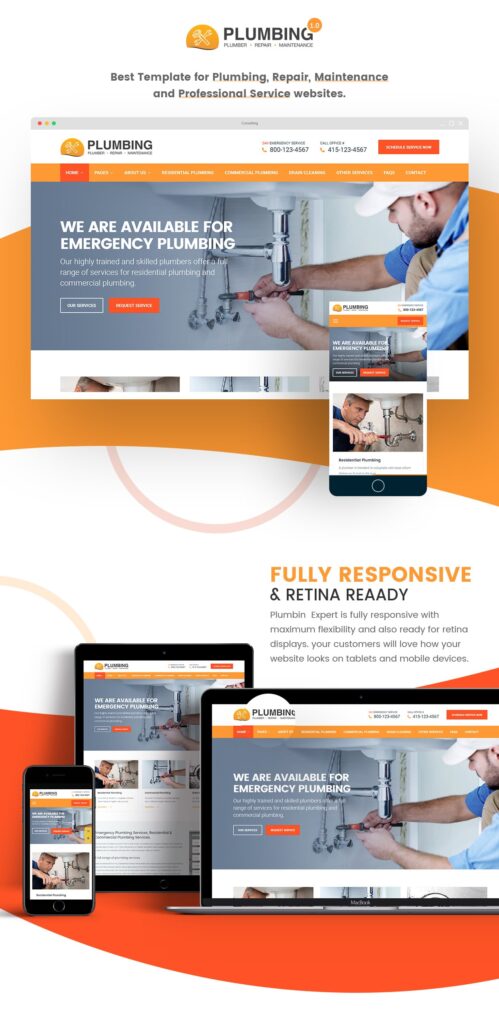
Employing high-quality images and videos can further enhance user experience by visually guiding customers towards your central services and clarifying what they can expect from working with you. Visuals can break up text and make information more digestible, boosting user interaction and engagement.
Accessibility to your contact information should be a consistent element of your website design. Whether through a dedicated contact page or visible contact details on every page, visitors should never struggle to find how they can reach out to your plumbing or HVAC business.
Responsive Design for Mobile Users
As mobile searches for plumbing and HVAC services are incredibly common, a mobile-responsive design is absolutely vital. Mobile responsiveness ensures that your website adapts to the screen it's being viewed on, providing a consistent and accessible experience for all users. This capability has repercussions beyond user engagement, as search engines like Google actively prioritize mobile-friendly websites in their search rankings.
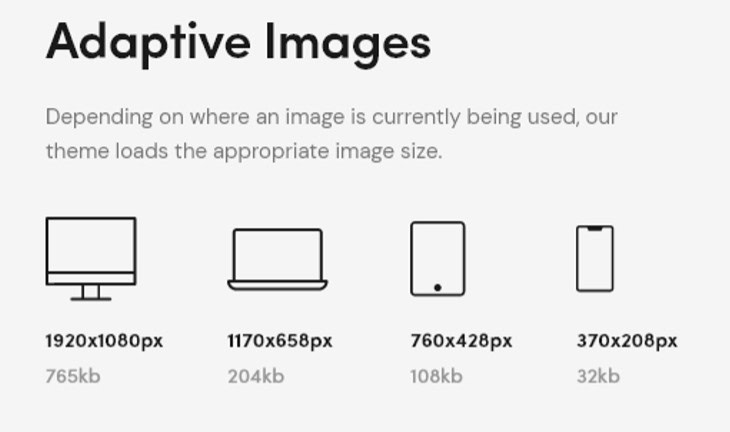
When a website fails to impress on a mobile device, users are less willing to interact with that company. Thus, a responsive design not only caters to users' needs but also serves as a crucial factor in retaining customer engagement. Fortunately, most contemporary website builders incorporate tools that streamline the creation of responsive designs.
Responsive design is not just a recommendation but a requirement in today's mobile-centric world. Adhering to Google's best practices, a plumbing or HVAC business can ensure a seamless experience for its prospective customers, regardless of the devices they use, thereby enhancing online presence and potentially increasing organic traffic.
In conclusion, crafting a user-friendly experience through intuitive navigation and responsive design is essential for any professional plumbing or HVAC website. By prioritizing these aspects, service companies can increase traffic, convert visitors into qualified leads, and ultimately grow their business.
High-Quality Content Creation
Creating content of high caliber is pivotal for plumbing and HVAC websites looking to enhance their online presence and authority within the industry. Strategic content does not only serve the purpose of filling up web pages but acts as an essential tool for improving search engine rankings, engaging customers, and establishing a sense of trust and credibility in your service offerings.
Blogs and dedicated landing pages present an outstanding opportunity to target specific audiences and needs, enabling businesses to reach and engage with a broader array of potential leads. With careful attention to the questions and concerns that prospective clients have, your content can be tailored to address those points, drawing in an audience that is already interested in services like yours.
The creation of relevant, expertly tailored content is at the heart of effective SEO practices. By incorporating keywords strategically and providing value through informational and educational resources, your website becomes not just a business card but a knowledge hub for your visitors. This, in turn, increases user engagement and can markedly raise the likelihood of converting casual browsers into loyal customers.
To maintain and even boost your search engine ranking, it is crucial to keep your content fresh and updated regularly. The ongoing process of refining and expanding published content ensures that your website stays pertinent and useful to both new and returning users.
Utilizing Images and Videos for Storytelling
Embedding high-quality images and videos on your HVAC and plumbing website can make a compelling case for the authenticity and reliability of your business. The use of engaging visual elements appeals to the modern web visitor's preference for multimedia content over extensive blocks of text, thus it becomes essential to convey your message and brand story through these formats effectively.

For your business, showcasing company images and videos on the website does more than just enhance the aesthetic appeal; it breathes life into your offerings and helps potential customers form a connection with your brand. It allows them to witness your team in action, the meticulousness of your work, and the satisfaction of your customers firsthand.
Multimedia not only adds dimension and variety to your content but also acts as an engagement magnet, keeping visitors interested and immersed in your narrative. In addition, it can provide a deeper understanding of the services you offer, reinforcing the value proposition of your company.
A well-composed website that leverages the power of images and videos will not only captivate potential clients but also serve as a vital component of your lead generation strategy. By presenting your business as approachable, professional, and dependable, you are more likely to convert visitors into leads and, ultimately, satisfied customers.
Utilizing Images and Videos for Storytelling
High-quality images and videos are not just elements of visual appeal; they are storytelling tools that build trust and convey authenticity, especially for service companies like HVAC and plumbing businesses. A well-designed plumbing or HVAC website that features multimedia, such as your company's real-life images and videos, can enrich the user experience significantly.

Most web visitors have a clear preference for visual content and tend to engage less with long textual descriptions. Thus, incorporating multimedia effectively is crucial to grabbing the attention of potential customers. Photos and videos can break up text-heavy content, adding context and boosting engagement.
Utilizing Images and Videos for Storytelling:
- Authenticity: Original photos and videos illustrate the true nature of your services.
- Trust: Visuals establish credibility by showcasing actual work and satisfied customers.
- Engagement: Multimedia elements keep users interested and interacting with your website.
- Lead Generation: An appealing and credible online presentation can lead to increased inquiries and service requests.
- Marketing: Integrates seamlessly into your overall online marketing strategy.
Focusing on these aspects can transform your Plumbing and HVAC website into a dynamic platform that narrates your company's story, ultimately contributing to your marketing efforts by appealing to potential clients in a more engaging manner.
Website Performance Optimization
For HVAC and plumbing service companies aiming to ramp up their online presence, website performance optimization is not just a fancy term—it's a crucial factor for success. Understand that a slow-loading website is more than just an inconvenience; it's a deterrent for prospective customers. In an age where 40% of website visitors will leave a site if it doesn't load within three seconds, the speed of your site becomes a key player in visitor retention.
Google's algorithm favors rapid website response times, ranking quicker sites higher in search engine results. This means your plumbing or HVAC website's visibility—and consequently its traffic—is intimately tied to its performance. Improperly optimized images, bloated code, and outdated web technologies are common culprits of sluggish sites.
Embracing streamlined, modern design is proven to enhance loading times and contribute significantly to higher conversion rates. Simple aesthetics lead to fewer elements to load, and when paired with minimalist coding techniques, they pave the way for a swifter performance. Moreover, the infrastructure hosting your website holds substantial weight. By choosing a faster web server, you can considerably uplift your site's speed, providing a seamless user experience that potential clients expect.
Boosting Page Load Speed
Boosting page load speed for your HVAC and plumbing websites isn't a luxury—it's an exigency. With over half of internet users exiting websites that lag beyond three seconds, the correlation between speed and customer retention can't be overstated. Add to that, sites breaching the four-second load time see a 25% visitor drop-off, shedding light on the critical nature of optimization.
To circumvent the pitfalls of slow websites that suffer from low traffic and diminished conversions—and to avoid Google's penalization—begin by assessing your hosting options. A swift web host can dramatically reduce load times, offering users immediate access to your services. Implementing strategic optimization methods such as properly formatting and compressing images, utilizing efficient caching, and paring down the use of heavy web fonts and unnecessary scripts will further contribute to your site's agility.
In the quest for speed, careful consideration of design elements is paramount. A clean and modern design philosophy not only resonates with contemporary aesthetics but inherently supports faster load times, enhancing the odds that potential customers will stick around, explore your offerings, and ultimately convert.
Ensuring Mobile Compatibility
Ensuring mobile compatibility is non-negotiable in the current climate where 64% of users reach for their smartphones when they're in need of plumbing services. A responsive design does more than make a great first impression—it's essential for engaging with the majority of your prospective clients, who are likely to search for your services on the go.
A poor mobile website experience can be detrimental, risking the loss of more than half of your audience. It's not just about shrinking your site to fit on smaller screens; it's about a thoughtful and strategic design that’s inclusive of mobile-specific criteria. Text readability, navigability, interactive elements, and optimized image sizes are areas that a skilled design team will fine-tune for mobile perfection.
Ignoring mobile compatibility means handing over a slice of the market to your competitors. As prospective clients increasingly rely on their mobile devices for quick searches and solutions, an optimally designed mobile website is your gateway to capturing and holding their attention. From adjusting load speeds to refining graphic elements, every detail counts in creating a compelling and user-friendly mobile experience that can boost your client outreach exponentially.
Incorporating Strong Calls-to-Action
Effective website design for HVAC and plumbing businesses is not just about aesthetics—it's about functionality and conversion. One of the most critical elements to include in these websites is strong calls-to-action (CTAs). A plumbing or HVAC website must feature CTAs that are clear and directive, guiding visitors towards scheduling services or asking for quotes, especially during emergencies when rapid action is required.
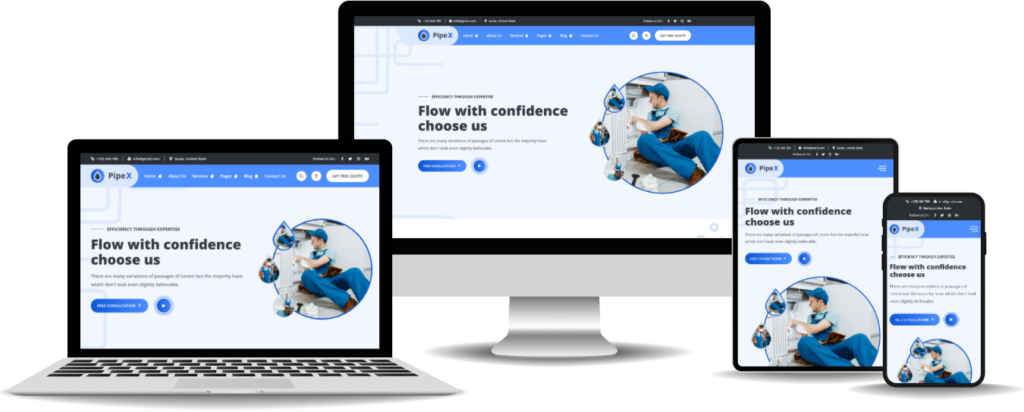
CTAs must be strategically placed across the website with bold colors and design elements, ensuring they are immediately noticeable. For plumbing sites, incorporating multiple CTAs is advantageous. Make sure there are distinct buttons for regular services and separate, prominent ones for emergency services, allowing distressed prospective clients to quickly find the help they need.
For HVAC business websites, every page should serve a purpose, with CTAs informing potential customers of the actionable steps they can take—whether that's making a service request, signing up for a maintenance program, or calling for immediate assistance. The right placement and design of CTAs can significantly enhance user engagement and improve conversion rates, transforming your website into a tool that actively generates qualified leads for your service company.
Building Credibility Through Testimonials
Building credibility is crucial for service companies, particularly in the HVAC and plumbing industries, where trust is a key factor in attracting new clients. A significant way of fostering this trust is by showcasing positive reviews and testimonials from satisfied customers directly on your website.
Statistics show that approximately 68% of consumers lean towards local businesses that have visible positive reviews, highlighting the impact of social proof on consumer behavior. Authentic customer testimonials, prominently displayed on a dedicated section of your site, act as a beacon of trust for prospective clients.
Here are some factors to consider for effectively using testimonials:
- Authenticity: Ensure testimonials are from real customers. Avoid doctored or AI-generated content.
- Visibility: Create a specific segment on your website for showcasing testimonials.
- Verification: Use feedback from verified clients to establish legitimacy.
With a reviews section that diligently adheres to these points, testimonials become a dynamic tool in demonstrating the reliability of your service. This can decisively tip the scales when a potential customer is making a decision, thereby increasing the chances of conversion and fostering long-term business growth for your HVAC or plumbing business.
SEO Strategies for Improved Visibility
For HVAC and plumbing businesses, improved visibility in search engine results is not a luxury—it's a necessity. Implementing SEO strategies effectively can mean the difference between being found by potential local customers or being overshadowed by competitors. Regularly updated and high-quality content, including blog posts and informative videos, play a pivotal role in enhancing search engine optimization. Not only does this content establish your business's credibility, but it also keeps your website fresh in the eyes of search engines like Google.
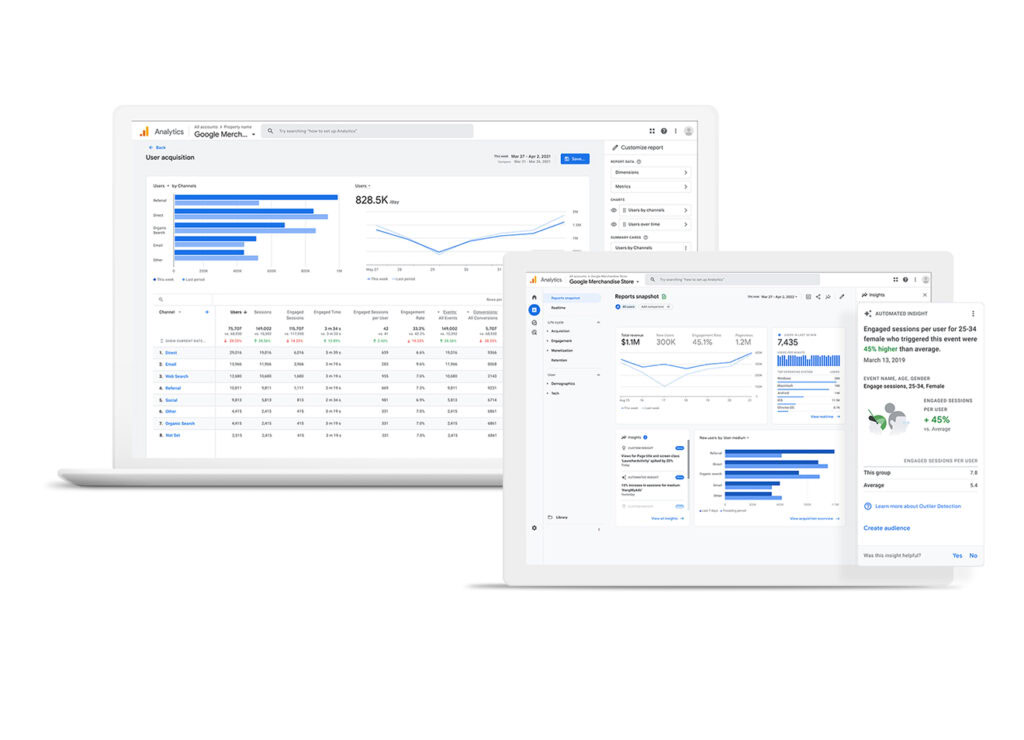
An often underestimated tool, a Google My Business profile, can generate significant website traffic. By providing essential business information and updates, this profile integrates seamlessly into your overall SEO efforts, helping to expand your visibility and, consequently, your sales funnel. With a customized approach designed to attract more visitors and increase leads, the right SEO strategy will make your HVAC business more accessible to those who need your services the most.
Keyword Research for Plumbing and HVAC
To connect with prospective clients, conducting thorough keyword analysis for your Plumbing and HVAC website is less of an option and more of an imperative step. Understanding and utilizing Google's metrics and algorithms ensures that your website steers clear of any penalties and secures high rankings for targeted searches. Keywords are the compass that guides search engines to your website.
Producing regular, original content such as blog entries and instructional videos not only empowers customers with knowledge but also drives organic traffic to your website. In addition to content creation, establishing a contextual internal linking structure is equally important, helping search engines understand your site's structure and content, which, in turn, improves your SEO effectiveness and enhances user navigation.
On-Page SEO Techniques
On-page SEO techniques are an integral part of the digital playbook for enhancing a website's visibility and drawing organic traffic. Effective keyword use, underpinned by exhaustive analysis, makes sure that your plumbing services feature prominently when potential customers turn to search engines. However, leveraging these keywords is just the beginning.
Web design best practices also heavily influence how search engines index and understand your site. This requires an SEO-friendly coding approach that will favor the site's visibility in search engine results. In addition, the continuous process of updating your site with original, high-quality content is critical in maintaining or improving ranking positions. Furthermore, building relevant and authoritative backlinks can significantly boost the SEO performance of your plumbing website, solidifying your online presence.
Local SEO Tactics
Local SEO provides a strategic advantage to plumbing services by optimizing a website's visibility for searches within the business's operating area. It is crucial for attracting potential leads who are actively looking for plumbing services nearby. With strategies tailored for local search engine results, you can ensure that your business is visible to prospective customers in your locality.
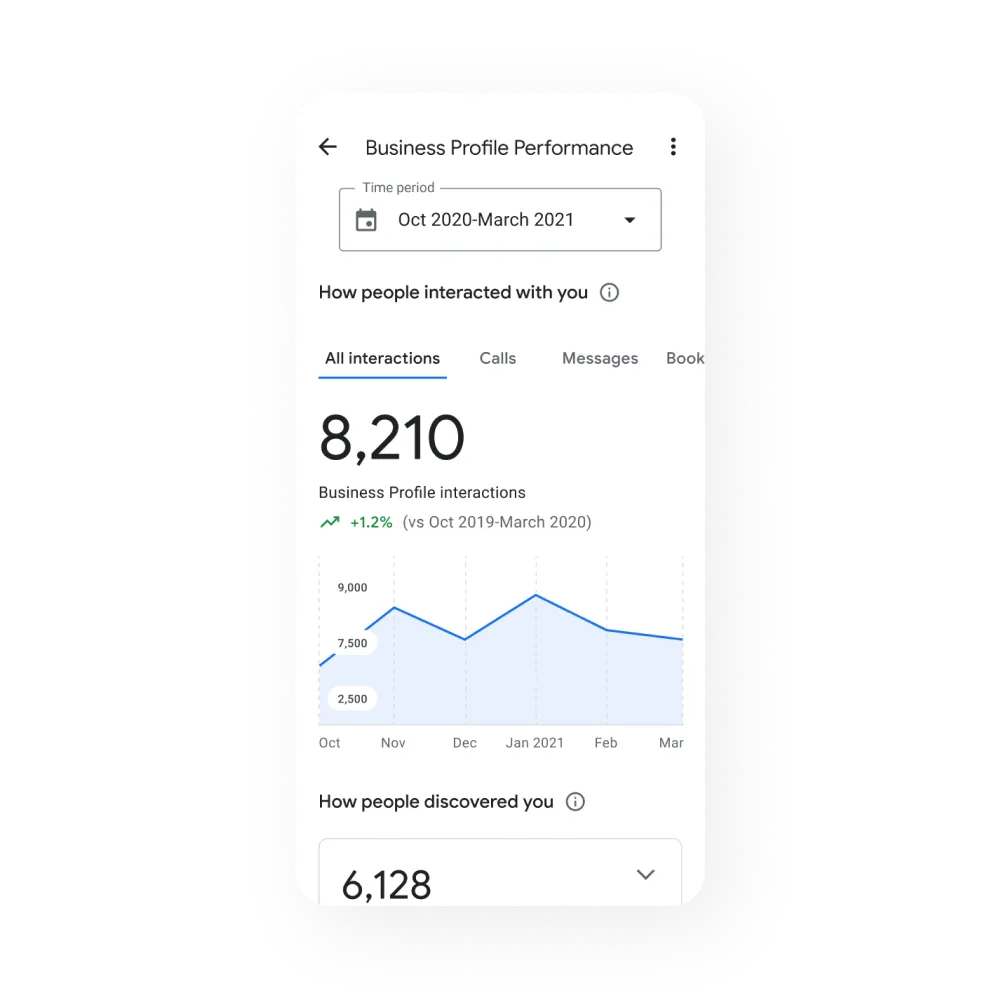
Content creation specific to your location, including blog entries and localized landing pages, is vital for strengthening your online reputation and enhancing your SEO. Additionally, tools like NearbyNow and DataPins, which display recent jobs with geo-coordinates, can improve local search rankings and make your plumbing website a prominent choice for local queries. A well-executed local SEO tactic improves the probability of being discovered in relevant search results, leading to an increase in leads and customer inquiries.
Analyzing Competitor Websites
In the HVAC and plumbing industries, a professional website is key to attracting potential clients and increasing online traffic. To outperform competitors, it's pivotal to analyze their websites thoroughly. Begin with a comprehensive website audit to pinpoint competitors' strengths and fragilities. This analysis includes a review of service pages to determine the clarity and conciseness of their service descriptions.
Furthermore, assessing competitor SEO strategies is invaluable. Scrutinize the keywords they target, including how effectively they leverage location-specific pages, which boost local search visibility. Understanding their search engine ranking mechanisms provides a roadmap to outranking them in search results.
Another critical aspect is the examination of their conversion tracking systems. How are they capturing qualified leads? What tactics do they use to optimize customer engagement? These insights are instrumental in refining your own website's conversion rates.
By dissecting the performance of competitors' sites, businesses in the plumbing and HVAC sectors can enhance their online presence, resulting in a more effective SEO strategy and a higher rate of organic traffic conversion.
Key areas to examine in competitor websites include:
- Service pages content quality
- SEO keyword targeting
- Utilization of location-specific pages
- Conversion tracking methods
Practical Examples of Successful Website Designs
Creating a professional website design for HVAC and plumbing companies is not just about aesthetics; it's about crafting an online presence that resonates with potential customers and prompts them to take action. A successful website design displays a blend of distinctive branding, intuitive navigation, and targeted calls-to-action. Take, for instance, Benjamin Franklin Plumbing, whose website features a standout logo that establishes brand identity and prominent call-to-action (CTA) buttons that are impossible for users to overlook. Such intentional design elements encourage user engagement, leading to increased traffic and potential conversions.
Moreover, the organized navigation bars with broad headings on their site provide straightforward access to service information, which enhances the overall user experience. This structured approach ensures visitors can easily find what they're looking for without frustration, thereby reducing bounce rates. The emphasis on visual appeal is clear; a well-designed site makes a compelling first impression that can sway visitors to stay and explore rather than seek services elsewhere.
Clear service pages are another cornerstone of effective plumbing and HVAC website designs, exemplified by several industry leaders. These pages often feature user-friendly functionalities such as drop-down menus, interactive elements, and detailed service descriptions that aid prospective customers in making informed decisions. Furthermore, strong design elements are not just ornamental—they also contribute to search engine optimization by influencing how content is structured and indexed, thus driving more potential leads to the site.
Conclusively, whether through strategic placement of CTAs, an easy-to-navigate interface, or engaging visual design, these practical examples underscore the influential role of design in attracting and retaining customers in the competitive plumbing and HVAC markets.
Case Studies in the Plumbing Industry
The plumbing industry, known for its practical services, has seen an evolution in the way companies present themselves online. O'Neill Plumbing Company provides an excellent example of how website design can reflect unique brand identity. By embracing a retro aesthetic and imagery reminiscent of its founding year, 1917, the company's site exudes trustworthiness and reliability—an important consideration for potential clients in the Seattle area.
Then there's Tony LaMartina Plumbing Company, which sets itself apart by creating a friendly and inviting atmosphere on its website. With warm imagery and scrollable content, the site encourages visitors to engage with the company's narrative and explore its services comfortably.
Quix Plumbing Service showcases the impact of a bright color palette and modernist design on its website, promising an attractive first impression that can capture the attention of potential customers upon arrival. High-quality, mobile-optimized website designs are fundamental for modern service companies; they not only facilitate a seamless user experience but also ensure quick loading times—an essential feature that contributes to customer acquisition and retention.
Through the integration of SEO strategies, these companies emphasize the importance of optimizing front-end elements such as headings, meta descriptions, and keyword placements. Such optimization ensures that their websites not only look good but also rank prominently in search engine results, fulfilling their ultimate purpose of drawing in prospective customers.
Case Studies in the HVAC Industry
An exemplary online presence is equally vital for HVAC businesses, as demonstrated by a variety of case studies. A professional design team dedicated to HVAC website creation can provide numerous examples of their successful design projects, emphasizing the importance of a polished, cohesive online image reflective of high-quality services offered.
Consider Hometown Heating & Air Conditioning, whose website design centers on an effortless user experience. With a prominently placed "Schedule an Estimate" button, the site effectively converts casual visitors into potential clients by providing a clear, immediate direction for action.
Another winning example is Woolace and Johnson's website. By featuring a distinctive truck wrap design and publishing customer reviews prominently, the site establishes brand authority and leverages social proof to instill trust in new visitors, enhancing the likelihood that they will engage with the company.
These case studies also highlight the necessity of incorporating custom design elements and conducting thorough quality assurance testing, ensuring every element of an HVAC website is tailored to meet industry standards and client expectations.
Additionally, contemporary HVAC web design packages often include the analysis of website design trends and statistics. By staying current and aligning with the latest market practices, HVAC websites can improve their appeal to prospective clients, boosting their overall online effectiveness.
